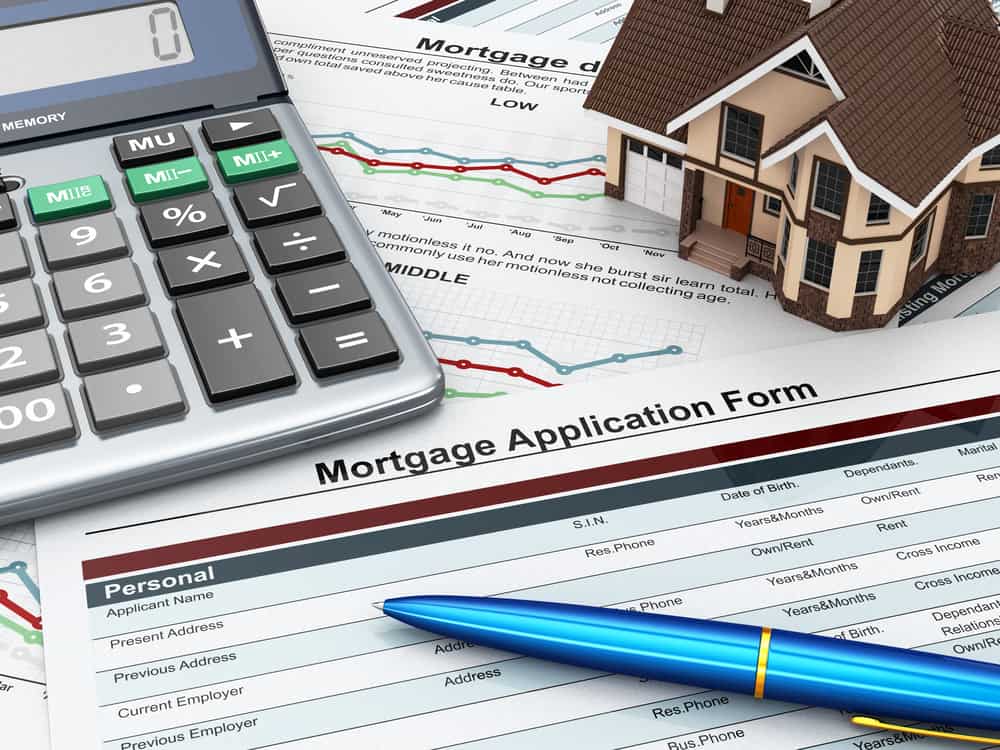- How many mortgages can you have?
- Qualifying for multiple mortgages
- Pros & cons of multiple mortgages
- Multiple mortgage financing
In a traditional real estate transaction, homebuyers can apply for a mortgage through a lender of their choice. In doing so, buyers will secure an interest rate and repayment schedule for their new home. Many people don’t know that this process can also be applied when buying a second home or investment property.
A conventional mortgage can be a reliable way to secure funding for a new home, even if you are already in the process of paying for one. This begs the question, “how many mortgages can you have?” Continue reading to find the answer and to learn about alternative financing methods that may be available.
How Many Mortgages Can You Have?
According to the Federal National Mortgage Association (commonly called Fannie Mae), you can have up to 10 mortgages in your name at one time. The current limit was announced in 2009 as part of the recovery process from the Great Recession. Previously, there were more limits on the number of conventional mortgages a homeowner or investor could have at once.
However, just because you can qualify for ten mortgages does not necessarily mean your lender will approve them. The application process can get more challenging if you already have multiple mortgages in your name — particularly after your fourth. Expect your lender to require higher down payments, better credit, and even more in cash reserves.
[ Thinking about investing in real estate? Register to attend a FREE online real estate class and learn how to get started investing in real estate. ]

How To Qualify For 1 To 4 Mortgages
For the most part, you should have no problem qualifying for up to four mortgages — if you meet the criteria specified by your lender. Mortgage lenders tend to require the following:
- Official proof of income
- A credit score between 670 and 740
- A loan to value ratio (LTV) of up to 80 percent
- Statement of assets and debts
- Financial information on existing investment properties
- Information on current mortgages
How To Qualify For 5 To 10 Mortgages
When Fannie Mae increased the number of mortgages one buyer could qualify for, they also implemented stricter requirements for approval. If you plan on applying for five to ten mortgages, you will need to meet the following criteria:
- Official proof of income for the last two years, showing rental income from any properties
- A minimum credit score of 720
- A 25 percent down payment for single family homes, or 30 percent down payment for multi-unit properties
- Zero late mortgage payments within the last year
- Zero bankruptcies or foreclosures within the last seven years
- Cash reserves to cover at least six months of payments
Pros Of Multiple Mortgages
Several benefits associated with multiple mortgages have led homeowners and investors alike to pursue this method of financing for several properties. One of the biggest perks is that you do not need as much cash on hand to secure multiple mortgages (except for your down payments and closing costs).
Multiple mortgages also allow you to get comfortable with your finances and set up systems to manage your payments over time. Organizationally, this can be a great way to streamline your operational costs. You can also leverage the equity you build up in one home to begin paying for another through a home equity loan or home equity line of credit (HELOC).
Cons Of Multiple Mortgages
The most significant con associated with multiple mortgages is the debt you will take on. If you were to experience a loss of income, no matter the cause, you will still be on the hook for all of your mortgage payments. This could put you at risk for foreclosures and a declining credit score, making investing more difficult in the future.
Another note to be aware of is that mortgages are not always the most cost-efficient way to finance a property. When adding multiple homes to your portfolio, you may face higher interest rates by working with a traditional lender. Many investors will opt to work with private money lenders, crowdsourcing, or even business partners as they begin acquiring more and more rental properties.
How To Manage Multiple Mortgages
You will need to have strong organizational systems in place to manage multiple mortgages. It is recommended that you keep track of your own repayment schedules and update them regularly. You can stagger your repayment schedule to prevent a large amount of cash from leaving your accounts at one time each month.
Many investors have found that working with the same local financial institution is the best way to apply for multiple mortgages. However, others might say that working with different providers is the best way to secure low interest rates. Shop around for the best mortgage terms every time you apply, and build out your own monitoring system. Organization is key when managing your finances (and rental properties).

Alternatives For Financing Multiple Mortgages
There are numerous financing methods in real estate; you just have to know where to look. Here are a few of the many alternatives to mortgage lenders to help you get started:
- Fannie Mae 5-10 Properties Program
- Hard Money Loans
- Blanket Loans
- Portfolio Loans
- Cash Out Refinancing
Fannie Mae 5-10 Properties Program
Fannie Mae rolled out its 5-10 financed properties program in 2009 in response to the national housing crisis. The program was designed for highly qualified investors with the intention that they would assist with economic recovery. The limit prior to the rollout of this program was four properties. Under the program, traditional lenders provide the loan while Fannie Mae takes on the risk.
Here are the qualifications investors must meet to participate in the program:
-
Have a 720 credit score
-
Be able to put down 25 percent on a single-family home (30 percent on a multifamily home)
-
Have the funds needed to cover PITI across all properties
-
Provide tax returns from the previous two years showing rental income
-
There cannot be any bankruptcies, foreclosures, or delinquencies of over 30 days in mortgage history
-
A 4506-T tax form
Hard Money Loans
Hard money loans are issued by private individuals or companies and are often associated with lower approval requirements and higher interest rates. These loans are also known for fast timelines, with investors closing in a matter of days or weeks (rather than the typical 30 days). Most lenders will require the property as collateral — meaning if you fail to make payments, the lender will get the property. That being said, hard money loans are a great option to secure financing quickly.
Blanket Loans
A blanket loan will allow you to lump several mortgages together under the same financing agreement. These loans are known for strict approval requirements; however, they are a great way to keep all of your payments in one place. Further, investors using a blanket loan can secure the same interest rate for all of their rental properties. These are commonly used by real estate investors, commercial property owners, and real estate developers. Overall, blanket loans can help make qualifying for multiple mortgages more efficient.
Portfolio Loans
A portfolio loan is another option offered by traditional lenders, but instead of selling the mortgage to a secondary company, it remains in the lender’s portfolio. Portfolio loans, sometimes called cross collateral portfolio loans, can finance more than one property under the same loan. These loans have faster approval timelines, though they can be more expensive than traditional mortgages regarding interest rates and prepayment penalties. This is because lenders are taking on the entire risk of the loan.
Cash Out Refinancing
A cash out refinance is another option that can help you add investment properties to your portfolio. This involves tapping into the equity you have built in an existing home and putting it towards a new property. The cash could be used as a down payment to secure financing from a traditional mortgage, hard money loan, or any other type of lender you see fit. Many investors find this to be an excellent option for acquiring new properties, as it can provide access to cash on a fast timeline.
Which Financing Option Is Right For You?
Many financial tools are available that allow investors to manage multiple mortgages at once. Some tools are traditional, while others are creative and cutting-edge. With that said, which financing option is right for you?
Although the decision is ultimately yours, there are some factors that determine the best option. For instance, you’ll likely want to choose the option that guarantees that your deal will go through within the timeframe you need. You’ll also want to look at the options that’ll have the smallest impact on your bottom line and allow you to preserve your cash flow. Last but not least, many investors have their personal investing styles, and some financing options fit these styles better than others. With these ideas in mind, choose the financing option that best fits your needs and will create the best outcomes for you financially.
Summary
Learning the answer to “how many mortgages can you have?” might surprise you. After all, applying for your first mortgage loan is a tedious process, let alone repeating it nine more times. Thanks to Fannie Mae, this process can be a reality if you want to add more rental properties to your portfolio. While there are several alternative financing methods available, it is important to understand how this option works. The opportunity to qualify for multiple mortgages can open new doors for your investing career.
Ready to start taking advantage of the current opportunities in the real estate market?
Click the banner below to take a 90-minute online training class and get started learning how to invest in today’s real estate market!

